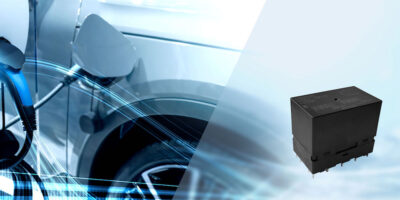High power PCB relay paves the way for faster and more compact EV charger wallboxes
Omron has launched a new high power PCB relay for use in AC wallboxes for Mode 3 AC EV charging stations. The G9KC relay provides the lowest contact resistance available and produces less load terminal heat rise when in operation.
As electric vehicles (EVs) grow in popularity, demand for dependable and high-speed EV supply equipment (EVSE) or EV chargers is also rapidly increasing. Improved charging speeds can be achieved by using higher charging currents; however, this requires the use of higher rated electronic components, resulting in the generation of more heat inside the wallbox enclosure.
Omron’s G9KC relay utilises an optimised structure which includes a mechanically coupled, double break contact design for demanding AC wallbox and Pedestal Charger designs for use in home, workplace, commercial and industrial settings. It’s aim is to offer an improvement in energy efficiency while reducing heat dissipation. As a result, G9KC contributes towards the overall reduction in operating temperature in a typical 22 kW (max 32 A/Phase) wallbox.
The relay’s 4-pole structure means that a single device can replace larger multi-pole Contactors and combinations of 1 and 2 pole, reducing the footprint required. With a guaranteed initial contact resistance of less than 6 mΩ it has the potential to contribute less as a hotspot while improving charging efficiency and performance. The G9KC’s lower operating temperature reduces the likelihood in the number of charge cycles reaching charging current throttling thresholds, while also contributing to improved reliability and longevity of the relays themselves, as well as surrounding components.
Unlike Contactors, the G9KC can be mounted on a printed circuit board (PCB), which can help to facilitate smaller and lighter designs in a variety of products including EVSE/ Chargers, UPS, Grid Interactive and commercial and industrial inverters and converters. G9KC has been approved by safety standard certification authorities of UL/C-UL, TUV and CQC, and has been designed to meet the requirements of IEC 62955 – Residual direct current detecting device (short circuit capability), and IEC 61851-1 – Electric vehicle conductive charging systems, alongside a wide range of other relay safety applicable standards.




